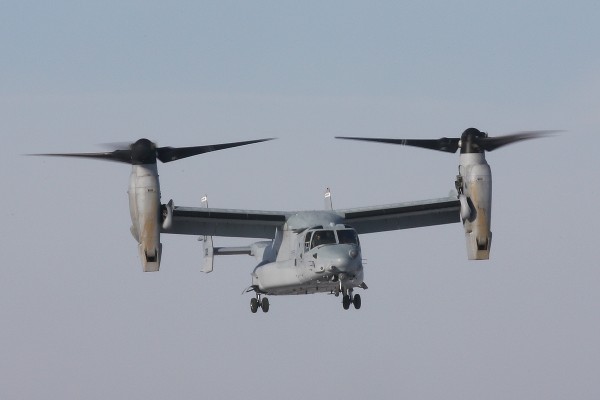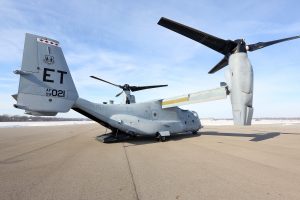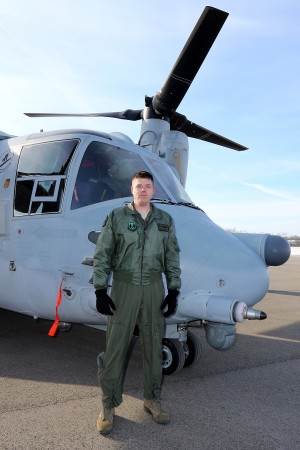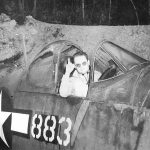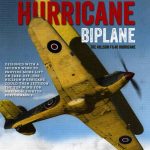PRESS RELEASE – DAYTON, Ohio — Yesterday one of the U.S. Air Force’s more unique aircraft landed at the National Museum of the U.S. Air Force a day later than what originally planned.In fact the arrival of a CV-22 Osprey at the National Museum of the U.S. Air Force originally planned for Wednesday morning was postponed because of weather concerns.
The CV-22 Osprey, a tiltrotor aircraft that combines the vertical takeoff, hover and vertical landing qualities of a helicopter with the long range, fuel efficiency and speed characteristics of a turboprop aircraft, was designed for use by special operations forces. Equipped with integrated threat countermeasures, terrain-following radar, forward-looking infrared sensor (FLIR) and other advanced avionics systems, the CV-22 can operate at low-altitude, in bad weather and high-threat environments.
“This new addition to our collection will give us the opportunity to tell two stories,” said Lt. Gen. (Ret.) Jack Hudson, museum director. “One is the use of the CV-22 by Air Force Special Operations Command aircrews. This airframe is also the culmination of decades of research and development, tying in with an early attempt at a tiltrotor aircraft – the Bell Helicopter Textron XV-3 displayed in our Research & Development Gallery.”
This aircraft (serial number 99-0021) is the Air Force’s oldest CV-22. In fact It is the first of the Air Force’s Ospreys.The CV-22, tail number 21, was delivered to the Air Force in 1999 and has logged 1,400 flight hours testing new equipment for special operators.It was originally built as a preproduction aircraft for the U.S. Navy. In 2005, it was modified into a CV-22B and designated an Additional Test Asset (ATA). At Edwards Air Force Base, Calif., it flew more than 200 developmental test missions. Transferred to the U.S. Air Force in 2007, it was assigned to the 413th Flight Test Squadron at Hurlburt Field, Fla., where it completed over 400 additional test missions.
“From the operator standpoint, it hurts to retire a test asset in such good shape and one that has served so well for so long,” said Maj. Wayne Dirkes, a CV-22 test pilot from the 413th Flight Test Squadron, who piloted the aircraft during its final flight. “However, we are incredibly proud that it will be in the museum, where it can begin a new public education mission. I can’t wait to bring my kids and tell them all about it.”
The Air Force’s version of the Osprey is specifically outfitted for special operations, including upgraded systems such as a terrain-following radar and new communications suites. The Air Force used the airframe to test new systems specifically for their CV-22s, such as new radars and new weapons integration.
The CV-22 will remain in storage pending the completion of the museum’s fourth building. Once aircraft have been moved into the fourth building, plans call for the CV-22 to be placed on display in the Cold War Gallery. In the meantime, visitors participating in the weekly Behind the Scenes Tours will see the CV-22 during their tour of the museum’s restoration area.
Accordingly to Boeing more than 200 Osprey tiltrotors are currently in operation across 10 Marine Corps and two Air Force Special Operations Command Osprey squadrons.The two services have together logged 16 successful combat, humanitarian, ship-based or Special Operations deployments since 2007. The worldwide Osprey fleet has amassed more than 190,000 flight hours, with more than half of those hours logged in the past two years.









